Spillikins ¹143. The Nokia World – Singing The Blues
Another week so very rich with really important news passed, unfortunately, not really good news. Sony Ericsson was officially declared dead – you can get more info on it here:
In the previous issue of the Spillikins I raised the issue of updating Android devices to the latest version. LG has stated that LG Optimus 2x will not receive the update which very sad and unfair as the company positioned this phone as a flagship device. Quite possibly LG will not provide updates for a big number of their phones for the reasons I will discuss below together with the company’s quarterly results.
I am writing this article sitting in a plane on my way to San Francisco so it will be out later than usually. I want to share a small observation I made recently in the Frankfurt airport. I took a picture of the monorail train that connects the airport terminals and I noticed that a girl nearby saw me do it and took out her camera and made of few pictures of the same train. I wonder, whether it is an unconscious desire to copy behavior of passersby or she just did not want to miss something interesting even though she did not understand what was so special about the train. Just me being curious.
Contents:
- The Thailand Flooding – The Aftermath for the Industry
- Nokia World: Key Announcements and Food for Thought
- 3rd Quarter Results According to IDC
- 3rd Quarter Results from LG and Samsung
The Thailand Flooding – The Aftermath for the Industry
The calamity in Thailand has already raised the prices for computers, hard drives and digital cameras. The flooding put a number of factories out of order including production lines of Acer, Nikon and others. The factories producing hard drive parts suffered the most and Acer expects sales to drop by 10% in Q4 2011. And since the company owns 11% of the PC market this will have a serious effect on the industry. Before the flood manufacturers had spare parts for 1.5-2 months of production so hypothetically the incident cannot have a dramatic effect on the market. But it did. Hard drive sales always go up by Christmas and this year it is about to break all the records. And by hard drive sales do not only concern separate HDD sales but also PC, laptops, netbooks, video cameras and TV sets. We may face the problem of HDD deficit. During the first week following the flood HDD wholesale prices went up by 20% while retail prices have gone even higher. Market analysts are making gloomy forecasts concerning the future of the market. Samsung, however, plays it cool and claims that even though the problem is real it will not affect the company’s profits. Meanwhile, other manufacturers are now calculating by just how much they need to raise the prices for devices that use hard drives and most of them are planning to add 25-30% to the price tags. The prices for HDDs have doubled and even tripled on most markets. There are two scenarios that manufacturers consider. The optimistic scenario is swiftly relocating production from Thailand to other countries which will allow getting things back to normal by the beginning of the next year. Skeptics believe it is impossible to do in such short time interval and that this crisis will last until the summer 2012 and I personally find this a lot more plausible. I don’t see any possibilities of quickly fixing the situation. However, this situation creates an advantage for SSD drives manufacturers since SSDs are already extremely expensive and there are no reasons for them to grow so they might become more popular.
This whole story is also interesting in terms of observing how quick news affects retail prices. I will use Russia as an example to illustrate my point. On the first day when we learned about the flood no one saw this news as something critically important. On the second day when first comments of manufacturers appeared a number of retailers started to cautiously buy hard drive batches. By the end of the day the picture was getting clearer and some companies bought everything they could some even took loans to purchase more but the retail prices did not change during the day. On the second day I also twitted that prices will go up and bought myself a couple of external hard drives. On the third day prices started to go up epidemically around the country. Retailers were now following the general trend. The demand also went up although I don’t think that anyone was actually buying hard drives for a rainy day – people simply made purchases they had been planning to make.
As a result the prices almost doubled. It’s funny that the prices went up unevenly. For example, one of the wholesale companies raised prices for internal hard drives and a retailer followed it and raised retail prices respectively. The wholesale distributor did not have any external hard drives and the retailer did not change the prices for them. So for a few days internal hard drives were about 50% more expensive than external drives with very same HDDs inside (usually it’s vice versa).
Another example of the market confusion – one of the major retailers is slow at price making so for a few days this company was out of the market in terms of prices for HDDs and were selling them cheaper than wholesale distributors so some of the wholesale companies were buying HDDs from retailers.
It is a nice demonstration of how quickly market players can react and who is ready to face contingencies. As for now, you don’t need to hurry to buy an HDD – the prices are unlikely to change dramatically in the near future and the prices are evening out after the shock in most countries.
Back to the table of contents >>>
Nokia World: Key Announcements and Food for Thought
Many were looking for an intrigue at Nokia World, but it was not to be. Information on new products was leaked regularly, so it was next to impossible to keep anything secret. Moreover, the presentation of new products was utterly boring and staged in the US style with presenters shouting from the stage. The CEO of Nokia was walking up and down the stage and showed “the first real Windows Phone 7”. He did it with a stretched hand as if begging to help with money for retirement.
No one knows why Nokia dubbed its WP7 flagship “the first real WP 7 phone”. Lumia smartphones got only the navigation software from Nokia. In future this app will be available in the Marketplace, while at the moment it is offered only with WP7 solutions from the Finnish manufacturer.
What Nokia failed to achieve and why this Nokia World is the worst ever? The company could not prove to their partners (mobile carriers and retailers) that they are planning to return to the market. Carriers do not care much as they want to sell products popular among consumers. Sadly for Nokia its brand image is far from what it was several years ago. The key unanswered question is why to buy WP7 from Nokia instead of Samsung, LG or HTC? There is no clear explanation. Nokia could not make a miracle and create a proprietary solution on the standard platform from Microsoft. As far as Microsoft forbids any modifications this task becomes indeed insurmountable. Nokia uses the same platform as the rivals, but sets higher prices due to the brand. This is certainly not enough.
For the first time in its history Nokia adopts the strategy of Microsoft by giving away its devices instead of selling them. Spend $499 in the Microsoft Store and get a WP7 phone of the first generation. Buy Xbox360 and get a phone for free. Buy a phone and get a gaming console as a bonus. There are a number of options for Microsoft to give away its gadgets, because the company sells software and not the devices.
On the other hand Nokia specializes in gadgets and has to sell them first. Instead Nokia is giving away 25,000 phones to developers and 60,000 to journalists, bloggers, partners and celebrities. This generosity spree will happen at the start of 2012. In fact Nokia destroys the lion’s share of its market by getting rid of people still loyal to the company and capable of buying its products. At the same time Nokia creates the market for preowned solutions, which are popular, but fetch lower prices. The same already happened with Nokia N97, Nokia E7 and others.
Unfortunately, Nokia did not impress much and explained why Nokia N9 was produced in low numbers. The company suffers from the lack of polycarbonate bodies used in N9 and Nokia 800. The current Nokia flagship will remain in this capacity until February 2012 to be replaced by Nokia 900 featuring a different screen size, camera and a faster processor. Main attention will be paid to Nokia 800 and the price of 420 Euros plus taxes confirms that.
The model is not very sophisticated. A 3.7″ screen of 480õ800 resolution, an 8 MP camera with autofocus and 1.4 GHz processor are complemented by a standard Mango from Microsoft. We get 16 GB of inbuilt memory, 512 MB of RAM, while the battery boasts 1450 mAh. Similarly to N9 this model is pretty heavy (142 g.) It is almost a full copy of N9 and being the second to the market the phone lost much of its allure, which is wrong. On the other hand, as far as Nokia failed to create new models within a tight deadline, they had to use what was already developed at the time.
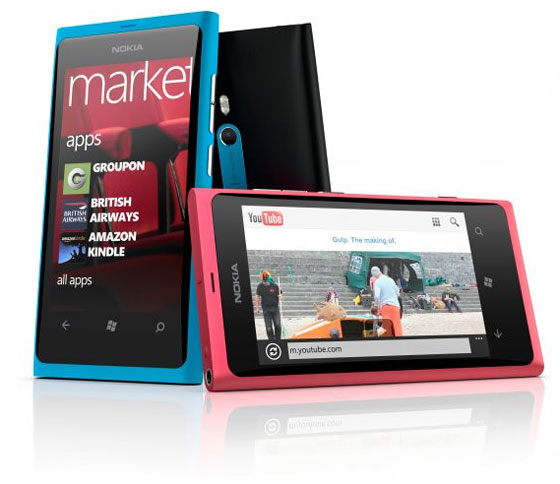
Nokia 710 is a budget solution. Instead of an AMOLED screen we get a TFT matrix, a 5 MP camera, 8 GB of inbuilt memory plus microSD memory cards. The price is only 270 Euros.
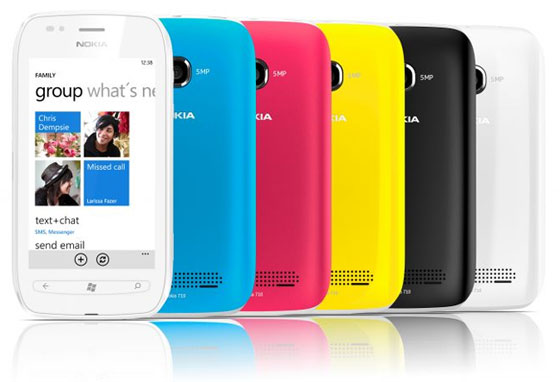

Unfortunately, Nokia could not eliminate traditional limitations of WP7. If you need to copy files welcome to Zune. It is a clear step backward for Symbian users. The experience is completely different and it is a serious disadvantage.
Such products will help Nokia to lose their market share even further. The company will report huge pre-orders for the model as it is moving from sales figures to PR activities.
Nokia is happy with its Russian representation office, which carved 15,000 pre-orders for Nokia N9, but sales reached 350 items during the first week despite the positive spin from the top management. May be the result was influenced by the fact that each store got only 20 phones. Interestingly, but Stephen Elop said at Nokia World that the model is successful. Now we know what Nokia considers to be their success. As of October 29 only 1,264 Nokia N9 models were active in Russia. I mean only the 3 leading mobile carriers, which nonetheless suggests that the majority of users do not use Nokia N9. Moreover, this figure contains 70 handsets belonging to Nokia, which were active before the official sales and around 170 phones, which were given away or distributed among journalists to write reviews. In other words during one month a mere 1 thousand of N9 users appeared in Russia. Do not forget how proud Nokia was with its promotion campaign in the social media and how the figures happened to be false. Nokia has serious issues, but the company tries to hide the facts and ignore the problems. An attempt to save the face when your sales are dismal is not the best strategy for the future.
It’s ridiculous how Nokia is falling apart from the inside. The company never had an issue with naming its products, but the WP7 range was named Lumia, which means “snow” in Finnish, “lightning” in Estonian and “whore” in Spanish. “Puta” is a more popular word, but “lumia” is still used in a similar capacity. Such blunders do not destroy products, but the brand image is affected.
Nokia World highlighted where the company sees its future. They will try to survive in India where they launch a lineup of inexpensive S40 solutions under the name of Asha – 200, 201, 300 and 303. Model 200 has a slot for the second SIM card and allows for the fast switch between them. 201 has a loud speaker, which symbolizes the music nature of the phone. The price is 60 Euros plus taxes.
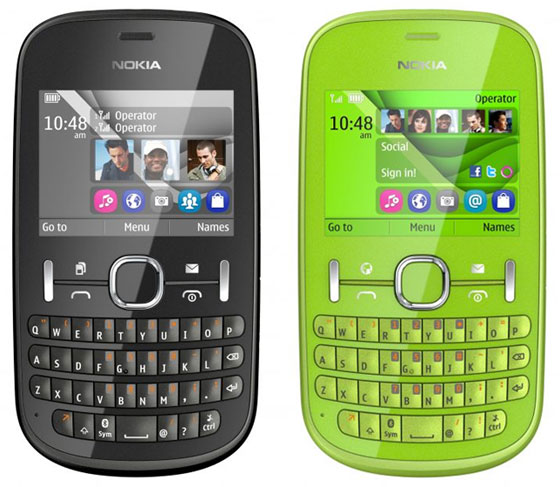
Models 300 and 303 feature small, but sensor screens together with 5 MP cameras and 3G support. They are priced 85 Euros and 115 Euros accordingly. Different colors of polycarbonate bodies are offered as well.
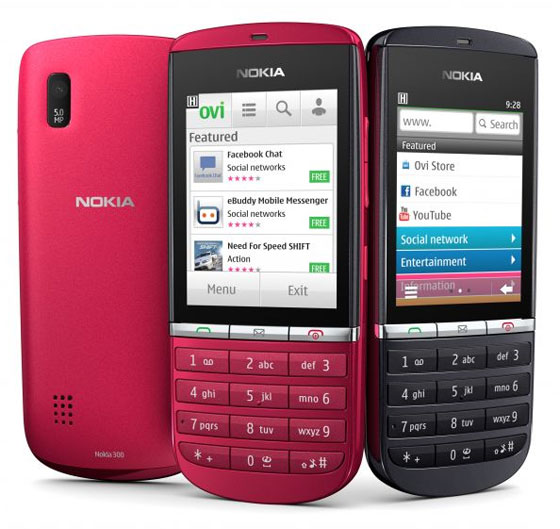
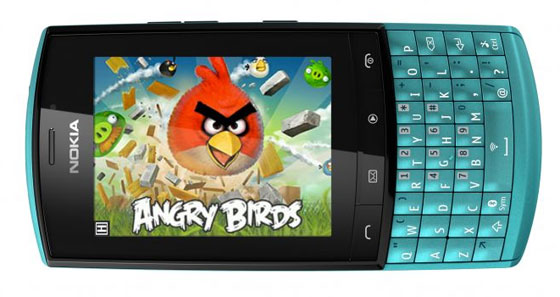
Prices are not too low as even in India Nokia is losing its market share quickly in favor of local and Chinese manufacturers. These models represent an attempt to stop the slide and not to boost the sales. The overall impression from Nokia World was pretty grim. We only received information on standard features of WP7, which was uninspiring. Partners who did not get answers to crucial questions are unanimous in their assessment. Nokia did not make them change their opinion and in future they will not risk the sales by banking on new Nokia products. That’s why the Finnish manufacturer is losing its market share so quickly.
Back to the table of contents >>>
3rd Quarter Results According to IDC
Let’s analyze the data from the 3rd quarter results. Bear in mind that the information from IDC deals with wholesale shipments.
| Top Five Mobile Phone Vendors, Shipments, and Market Share, Q3 2011 (Units in Millions) |
| Vendor |
3Q11 Unit Shipments |
3Q11 Market Share |
3Q10 Unit Shipments |
3Q10 Market Share |
Year-over-year Change |
| Nokia |
106.6 |
27.1% |
110.4 |
31.6% |
-3.4% |
| Samsung |
87.8 |
22.3% |
71.4 |
20.5% |
23.0% |
| LG Electronics |
21.1 |
5.4% |
28.4 |
8.1% |
-25.7% |
| ZTE |
19.1 |
4.9% |
12.1 |
3.5% |
57.9% |
| Apple |
17.1 |
4.3% |
14.1 |
4.0% |
21.3% |
| Others |
142 |
36.1% |
112.5 |
32.2% |
26.2% |
| Total |
393.7 |
100.0% |
348.9 |
100.0% |
12.8% |
| Source: IDC Worldwide Mobile Phone Tracker, October 27, 2011 |
| Note: Vendor shipments are branded shipments and exclude OEM sales for all vendors |
During one year Nokia lost 4.5% of its market share, which is a lot. At the same time Samsung grew only 2%. It is more difficult to go up than slide down, but the biggest surprise lies in the section “Others”, which increased 13%. Together with ZTE, Samsung and Apple they push Nokia all over the place. Smaller companies are the biggest beneficiaries of Nokia struggles.
Sony Ericsson is not mentioned separately and firmly belongs to the “Other” section now. Quarterly results for SE are not impressive. Motorola is also moving downward and plans to fire 800 people before Motorola Mobility is snapped up by Google. During the 3rd quarter the company lost $32 million with sales of $3.3 billion. They managed to sell 11.6 million devices with 100,000 of them represented by XOOM tablets. Motorola sold 4.8 million smartphones, which is way too low. As we have already mentioned in the Spillikins the company continues to lose its market share.
Back to the table of contents >>>
3rd Quarter Results from LG and Samsung
Judging by the figures these two Korean companies are moving in opposite directions. LG sold 28.4 million phones with the sales in monetary terms decreasing by 29% (in US dollars). Total losses reached $366 million with phones department responsible for $120-130 million. That’s why we see no new models from LG in stores. Once again it tries to understand what they should do with phones. Surprisingly, in its press release LG mentions plans to succeed with WP7, which the market should embrace better than the current product range. As far as I remember top managers of LG were the first to question the prospects of WP7. Now they make a complete U-turn, which does not bode well for future growth.
On the other hand Samsung has many reasons to celebrate. Apart from record breaking phone sales and income the company became the largest seller of smartphones in the world. Including Bada Samsung sold 27.5 million smartphones worldwide. Moreover, Samsung not only sells phones, but keeps a healthy margin. From this graph prepared by Asymco we see that after the all conquering Apple comes Samsung and its profits are soaring.

Do you want to talk about this? Please, go to our Forum and let your opinion be known to the author and everybody else.
Back to the table of contents >>>
Related links
Eldar Murtazin ([email protected])
 Twitter Twitter  Livejournal Livejournal
Translated by Maxim Antonenko ([email protected]), Robert Mugattarov ([email protected])
Published — 13 November 2011
Have something to add?! Write us... [email protected]
|










